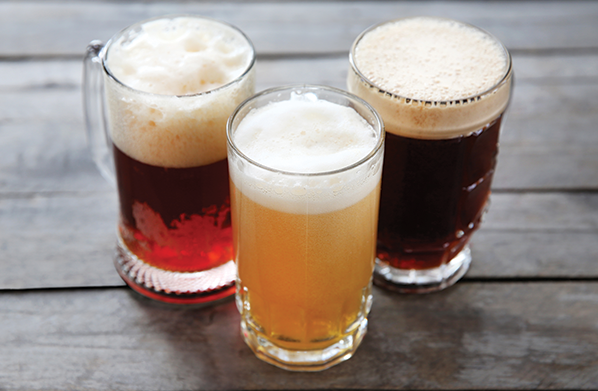When I moved to Austria in 2008, the woman trying to teach me German would often poke fun at America. Among her dated stereotypes was the notion that we unfortunate Americans were condemned to choose among Bud, Miller, or Coors, swilled out of cans or kegs and fueling an unhealthy—and dreadfully unsophisticated—beer drinking culture.
Of course, that wasn’t reality in 2008, and is even less so now. Yet there was a grain of historical truth in what my teacher said: For decades, after government prohibition initially killed beer brewing in America, the market was indeed dominated by a few large companies. In the late 1970s, the Carter Administration rolled back regulations to allow people to brew beer for their personal use (though not for sale). As home brewing became more popular in the early 1980s, states such as California and Washington changed the rules to allow for brewpubs, which could brew and sell beer on the premises. This launched a new trend, leading more lawmakers to roll back regulations, with an ensuing explosion in the number of breweries. There were fewer than 100 American breweries in 1984, but just a decade later, there were more than 600. Today, according to the Brewers Association, there are more than 5,300.
This robust beer marketplace means Americans can now choose from a wide variety of styles that suit their preferences. There are heavier Belgian-style ales, hoppier IPAs, chocolate-y stouts, lighter pilsners, fruit infused brews, and everything in between. This isn’t just good in the same way that having access to different kinds of bread is better than being limited to white and wheat. The craft brewery phenomenon has created its own culture and connoisseurs, creating more pleasure than merely that which comes from consumption.
When my husband and I last visited his parents in Arkansas, we discovered local favorites—Lost Forty and Stone’s Throw—available at many of the area restaurants and bars, along with many other nationally-distributed labels. Family there shared their favorites and the history of the breweries. It seems that, just as professional sports teams give men an always available, safe topic of discussion, trading notes about the best local craft brews is another easy topic, particularly for guys who sometimes struggle to start a conversation.
From what I’ve seen, men who wouldn’t dare share photos on Facebook are increasingly employing apps like Untappd, which allows them to post what beer they’re sampling, along with a review. There are now some five million Untappd users—I couldn’t find a demographic breakdown, but I’ll bet it skews heavily male—who are toasting each other’s drink selections and discovering beers they should try next.
There’s an obvious economic benefit to the craft beer boom as well: The industry sustains about 424,000 jobs and adds an estimated $55 billion to the U.S. economy. While perhaps less visible, the cultural benefits are also no small thing. Europeans can no longer look down their noses at American beers. In fact, Europeans are now taking cues from America on craft brewing. Even Germany—which clung to its prized beer “purity” law for centuries—now hosts vibrant craft beer festivals, with “American style” IPAs featuring prominently. Berlin, where I lived, hosts an enormously popular Beer Week—a ten-day celebration of craft beer. Just about every brewer I spoke with mentioned America as the pioneer in the field.
It’s no surprise, really, that America—once the butt of beer jokes—would become the world leader in brewing innovation and creativity once the government got out of the picture. That’s what happens when a creative culture with strong property rights frees its markets. Passionate, ambitious people find ways to offer others quality products in nearly infinite varieties. I doubt the Carter Administration could have predicted that a little deregulation would help create today’s vibrant craft beer world. But that’s the point: Just like a large economy a small culture will thrive if it’s allowed to.
It makes me wonder: What other great cultural and economic developments are being suppressed by nonsensical government regulations? This Independence Day, maybe we should cut the red tape and find out.


